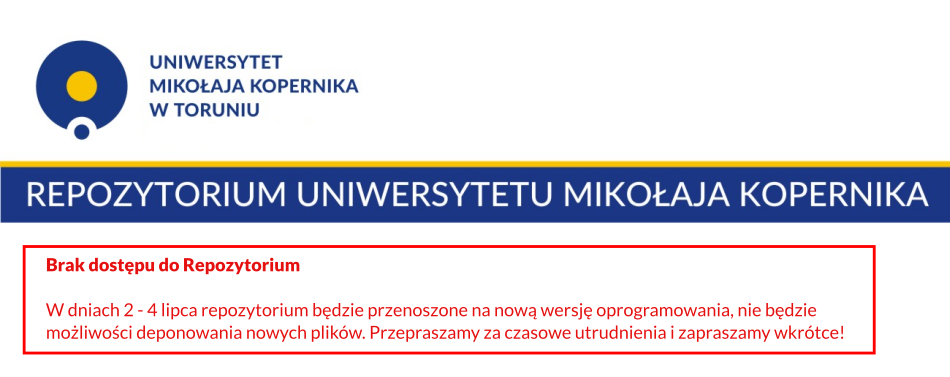| dc.contributor.author |
Paczkowski, Mieczysław Celestyn |
| dc.date.accessioned |
2015-04-10T08:38:23Z |
| dc.date.available |
2015-04-10T08:38:23Z |
| dc.date.issued |
2015-02-27 |
| dc.identifier.citation |
Biblica et Patristica Thoruniensia, No. 4, Vol. 7, pp. 77-96 |
| dc.identifier.issn |
1689-5150 |
| dc.identifier.other |
doi:10.12775/BPTh.2014.024 |
| dc.identifier.uri |
http://repozytorium.umk.pl/handle/item/2711 |
| dc.description.abstract |
The cock belongs to a specific set of symbols that are found not only in Christianity but also in other religions and cultures. In the past, European culture linked the figure of this bird with the sun: the crowing rooster proclaimed the dawn and banished the darkness. The Christianity made it a symbol of the victory of light over darkness and the triumph of good over evil. It were noted only the positive features of the rooster. The Holy Scripture does not follow classical antiquity, but the authors of the sacred books were turning their attention to this wonderful creature. The Jewish and Christian traditions make use of the expression „crowing rooster”, which means „very early in the morning” (lat. gallicinium ). The cock was then the herald of the day that the believers of Christ remembered the truth of the resurrection and the need to keep watch. The figure of the rooster permanently entered in the ornamentation and Christian iconography. However, it postponed the hope of awakening in eternity. The rooster would signify the repentance of the saint and religious vigilance as well as resurrection. As the rooster watched for the morning, so all Christians were to watch for the Lord who would one day suddenly return to judge the living and the dead. The bird in question remembered also the difficult time of the Apostle Peter’s denial (see Mt 26:29–75: Mk 14:53–72; Lk 22: 54–71; J 18:12–27). For this reason this Gospel passage, known and frequently commented, was represented on the mosaics and oil lamps. These tools remembered the need for vigilance on the part of Christians and helped in it. Finally the ancient Christian authors saw in the figure of the rooster a symbol of the preacher of the Gospel. The word of God should wake up „sleeping” or not overzealous Christians. |
| dc.description.abstract |
Postać koguta stanowi jeden z elementów specyficznego zbioru symboli, należącego nie tylko do chrześcijaństwa, lecz również do innych religii i wielu kultur. W przeszłości kultura europejska chętnie łączyła koguta ze słońcem: swoim pianiem obwieszczał on świt i odpędzał demony mroku. Wyliczano i zauważano niemal wyłącznie same pozytywne cechy koguta. Pismo Święte nie idzie śladem starożytnego świata klasycznego, ale autorzy świętych ksiąg zwrócili uwagę na tak wspaniałe tworzenie Boże. Tradycja żydowska i chrześcijańska posługują się wyrażeniem „o pianiu koguta” (łac. gallicinium ), co znaczy bardzo wcześnie rano. Kogut stał się w powszechnej świadomości zwiastunem dnia. Ogłaszanie pianiem nadchodzącego brzasku było dla wierzących w Chrystusa przypomnieniem prawdy o zmartwychwstaniu i wezwaniem do czuwania. Sylwetka koguta na stałe zresztą weszła do ornamentyki i ikonografii. Kogut obwieszczał także nadzieję zmartwychwstania. Podobnie jak ten ptak czuwa, czekając na pierwsze blaski poranka, również chrześcijanie powinni być czujni i gotowi na przyjście Pana. Na kartach Ewangelii pianie koguta to przypomnienie trudnych chwil i zaparcia się Zbawiciela przez Piotra apostoła (por. Mt 26,29–75; Mk 14,53–72; Łk 22,54–71; J 18,12–27). Związek wizerunku koguta ze znanym i komentowanym fragmentem Ewangelii spowodował, że często przedstawiano tego ptaka na mozaikach i lampkach oliwnych. Te ostatnie przedmioty przypominały o potrzebie czuwania i pomagały w nim. W homiletyce chrześcijańskiej kogut stał się także symbolem głoszących słowo Boże. Przez przepowiadania słowa Bożego winno budzić się „drzemiących”, czyli niezbyt gorliwych chrześcijan. |
| dc.language.iso |
pol |
| dc.rights |
Attribution-NoDerivs 3.0 Poland |
| dc.rights |
info:eu-repo/semantics/openAccess |
| dc.rights.uri |
http://creativecommons.org/licenses/by-nd/3.0/pl/ |
| dc.subject |
Rooster (symbol of) |
| dc.subject |
Bible |
| dc.subject |
Christianity (ancient) |
| dc.subject |
religious language |
| dc.subject |
Kogut (symbol) |
| dc.subject |
Biblia |
| dc.subject |
chrześcijaństwo starożytne |
| dc.subject |
język religijny |
| dc.title |
Czujny zwiastun brzasku i zmartwychwstania. Kogut w symbolice starochrześcijańskiej |
| dc.title.alternative |
Watchful herald of the morning and resurrection. The rooster in the ancient Christian symbolism |
| dc.type |
info:eu-repo/semantics/article |


